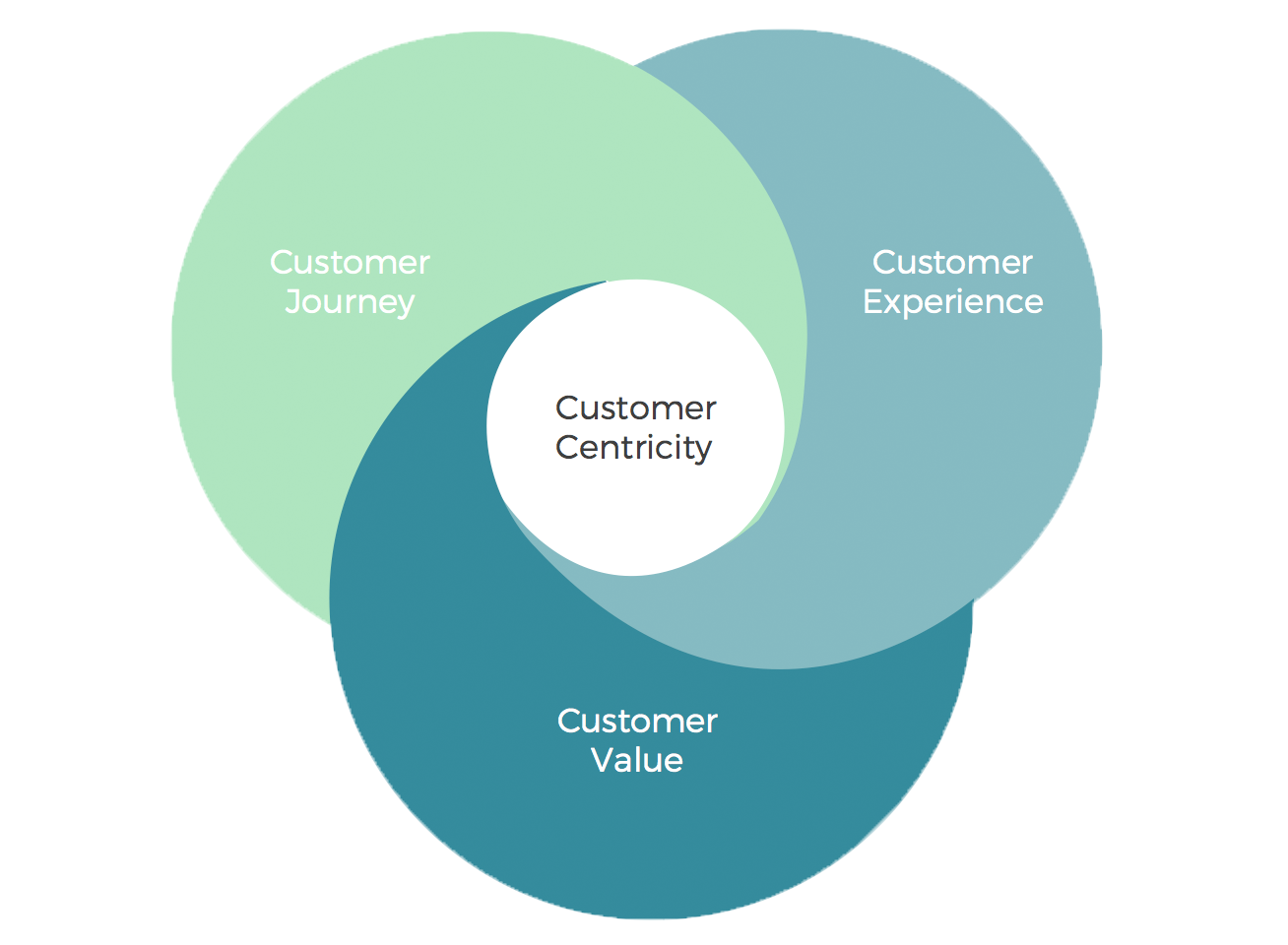The concept of customer centricity is intended to increase customer satisfaction and lead to a good experience during the purchasing process (customer experience). In contrast to conventional marketing and sales concepts, customer centricity does not focus primarily on the products or services, but rather on the people making the purchase.
What is customer centricity?
Customer centricity, as the name suggests, is a business strategy that revolves around the needs and expectations of customers. It goes beyond good customer service; it's about delivering a seamless and personalized experience at all touchpoints from the customer's perspective.
This approach requires a deep understanding of customer behavior, preferences and needs. It involves taking and integrating feedback, analyzing market data and using these insights to design products, services and even business models. Essentially, a customer-centric company is one that builds its entire operations around the customer.
What are the benefits of customer centricity?
The introduction of a customer-centric approach brings numerous benefits. Firstly, it increases customer satisfaction and loyalty. By understanding and meeting the needs of customers, companies can create products and services that resonate with them, leading to increased customer loyalty and advocacy.
Secondly, customer centricity drives innovation. As companies constantly strive to meet and exceed expectations, they are forced to constantly find new ways to stay ahead of the competition.
What is the difference between customer orientation and customer centricity?
Customer orientation and customer centricity are two terms that are often used interchangeably but are actually different concepts. Customer centricity refers to a business strategy that aims to meet the expectations and needs of customers.It is essentially a reactive approach where a company responds to the feedback and requirements of its customers.
Customer centricity, on the other hand, goes one step further. Here, the focus is not only on meeting the customer's needs, but the company also tries to anticipate and exceed the customer's wishes and needs. Customer-centric companies strive to understand their customers on a deeper level and adapt their products and services accordingly.
Main Elements of Customer Centricity
Implementing customer centricity is not a simple process. It is a comprehensive approach that requires significant changes at all levels of a company. Although the idea of putting the customer at the center - under the well-known motto "the customer is king" - is not new, digitalization and the increased focus of many companies on new online communication and sales channels pose new challenges for customer centricity.

The integration of modern online technologies requires a complete redesign of the customer journey and also influences the way in which companies work in a customer-oriented manner. A key feature of today's customer centricity is the collection of personalized data from potential customers in the initial phase of the customer journey. This data is then used to influence purchasing decisions and provide customers with a personalized experience.
The implementation of customer centricity is therefore not just a question of attitude, but also of strategic planning and concrete implementation in all areas of the company. The focus is always on offering customers a positive experience and thus building long-term customer relationships.


